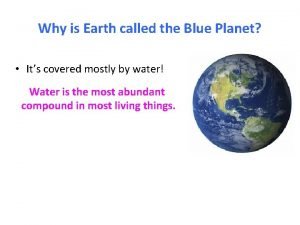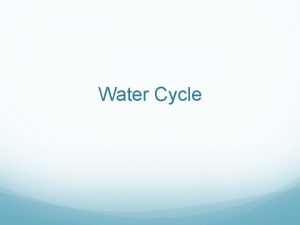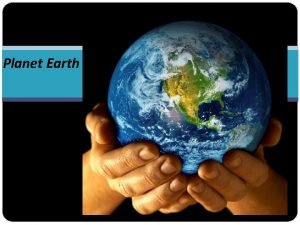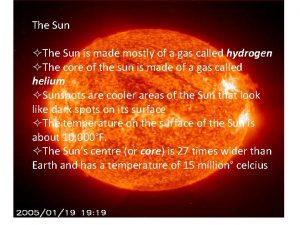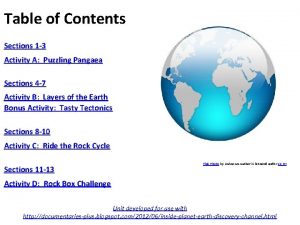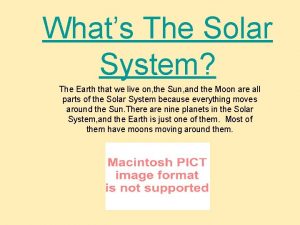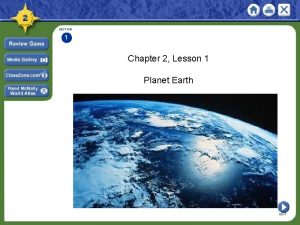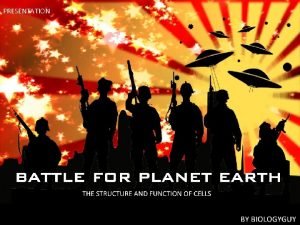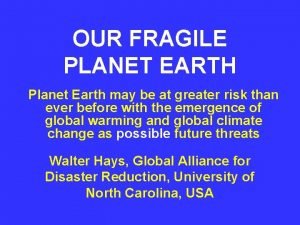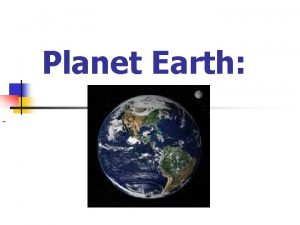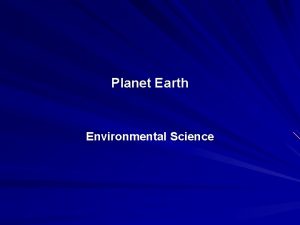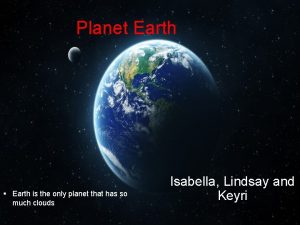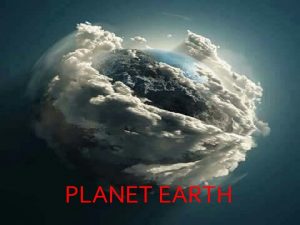Chapter 1 Section 1 Planet of Life Earth







- Slides: 7

Chapter 1 Section 1 Planet of Life

• Earth is one of the nine planets in the solar system. • Earth is the third planet from the sun. • Mercury, Venus, Earth and Mars are known as the inner planets and are made mostly of rock. • The other five planets are the outer planets and are made of mostly gases, with the exception of Pluto, which is rocky like the inner planets. • Earth is the only planet to support life or living things called organisms.

• The lithosphere is the layer of land that forms Earth’s surface and includes rocks, soil, and sand. • The hydrosphere includes all the parts of the Earth that are made up of water and includes oceans, lakes, rivers and underground water and clouds in the air. • The atmosphere is the layer of air that surrounds Earth.

• One of the most important reasons Earth can support life is the presence of liquid water. • Although water exists elsewhere in the solar system, it is usually in the form of ice or vapor. • On Earth, liquid water in the hydrosphere stores heat. • Water absorbs heat during warm periods and releases it during cold periods.

• Another reason Earth is able to support life is its atmosphere. • Air is a mixture of gases, including nitrogen, oxygen, carbon dioxide, and water vapor. • Most organisms require oxygen to use energy. • Plants require carbon dioxide to help capture and store energy from the sun. • Almost all energy used by organisms comes from the sun and travels in the form of waves.

• Each type of wave has a different range of wavelengths. • Most waves are invisible. • Waves in narrow range of wavelengths, called the visible spectrum, can be seen by the human eye.

• Interactions among living and nonliving parts of the Earth are the subject of ecology. • Ecology is the study of Earth, the home of living organisms.
